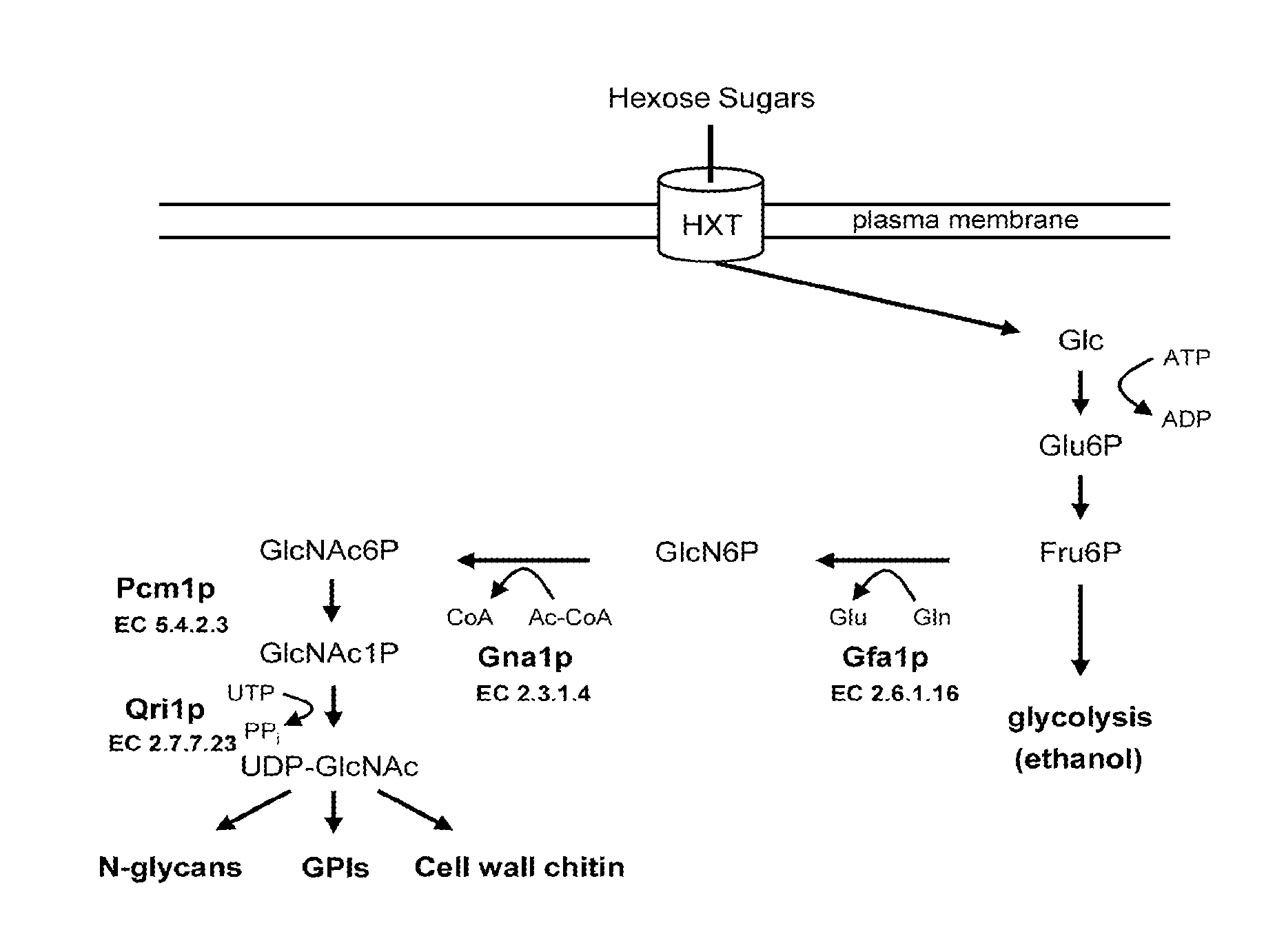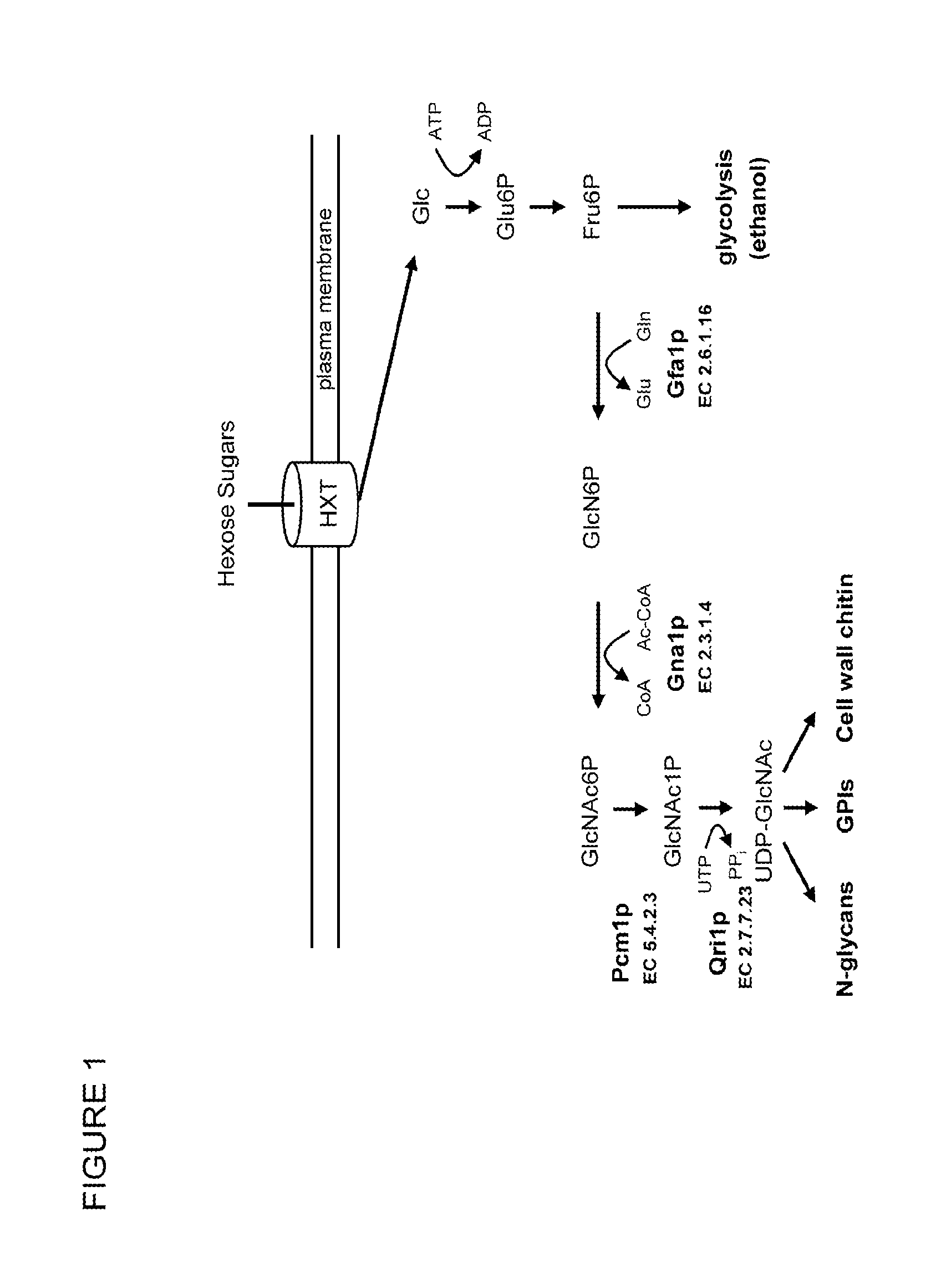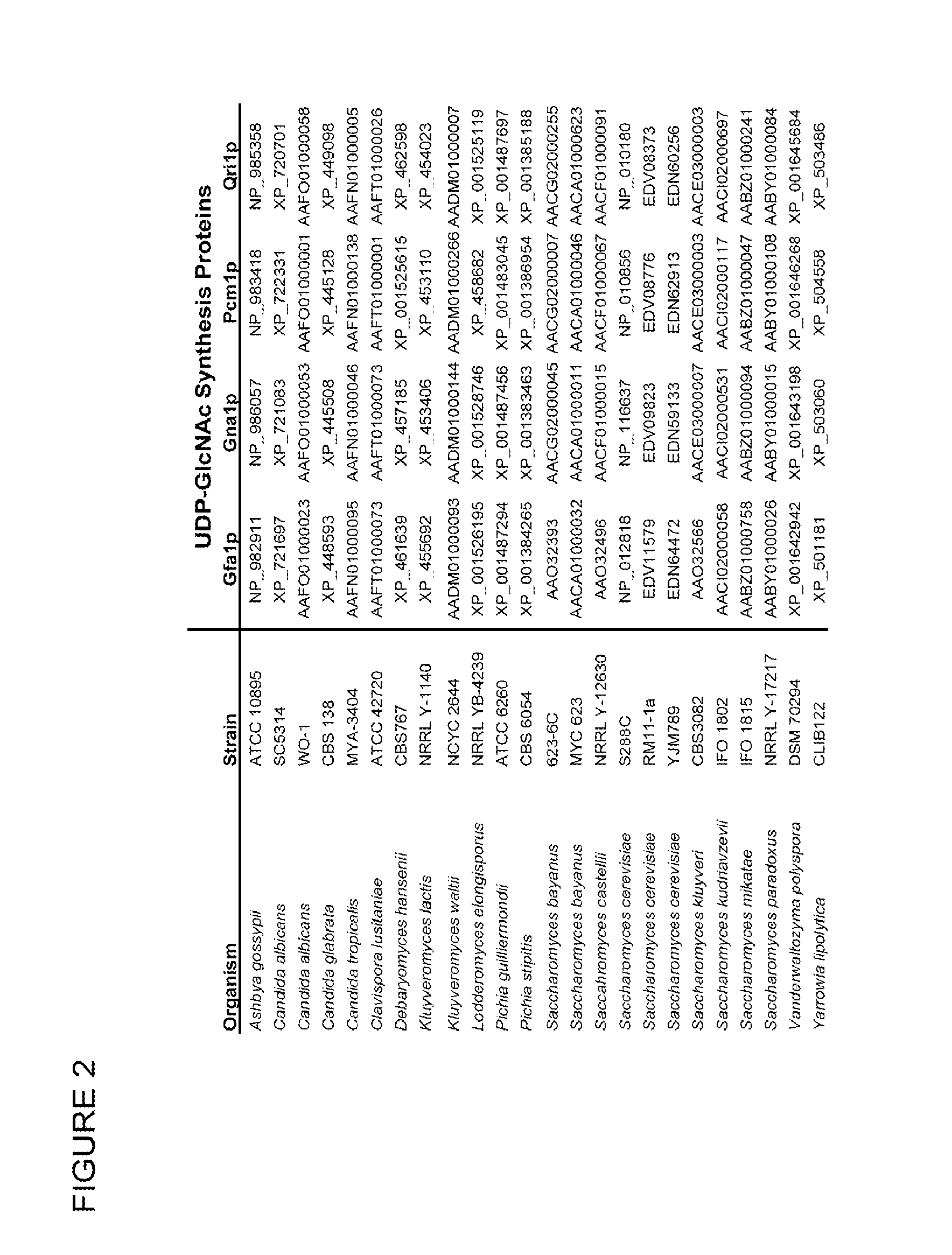Genetically Engineered Yeast for the Production of Biofuels
a technology of biofuels and genetic engineering, applied in biofuels, enzymology, transferases, etc., can solve the problems of negative impact on food prices, limited ethanol manufacturing, and metabolic conversion to ethanol
- Summary
- Abstract
- Description
- Claims
- Application Information
AI Technical Summary
Problems solved by technology
Method used
Image
Examples
example 1
Sugar Assimilation by S. cerevisiae and C. albicans
[0029]The ability of a comprehensive set of known yeast species to assimilate GlcNAc has previously been published (The Yeasts, A Taxonomic Study, C. P. Kurzman & J. W. Feld, Ed. Elsevier, New York, 1998). Here we illustrate the ability of C. albicans and S. cerevisiae to assimilate glucose, galactose, mannose and GlcNAc.
[0030]Strains C. albicans CAI4 (ATCC MYA-682) and S. cerevisiae BY4734 (ATCC 200896) were streaked and grown on synthetic medium (Difco™ yeast nitrogen base medium (Beckton, Dickinson & Co, Sparks, Md.) supplemented with the necessary amino acids and nucleotides needed to complement strain auxotrophies, 100 mM of glucose and 2% (w / v) agar at 30° C. for 2 days. A small aliquot of cells from each streak was suspended in 0.25 mL liquid synthetic medium containing no supplements or glucose. One hundred microliters of each suspension was placed in a microtiter plate well and subjected to 10-fold serial dilutions with fr...
example 2
Assembly of Vectors for Expression of GlcNAc Metabolism Genes in S. cerevisiae
[0031]S. cerevisiae lacks GlcNAc kinase (EC 2.7.1.59), GlcNAc6P deacetylase (EC 3.5.1.25) and GlcN6P deaminase (EC 3.5.99.6) enzyme activities (FIG. 5) and does not assimilate GlcNAc. We sought to determine if expression of genes encoding these enzymes confers upon S. cerevisiae the ability to assimilate GlcNAc. Genes encoding GlcNAc kinase (Hinderlich et al., Eur. J. Biochem. 267:3301-3308 (2000)), GlcNAc6P deacetylase (Vincent et al., J. Biol. Chem. 279:2809-2816 (2004)) and GlcN6P deaminase (Shevchenko et al., Gene 216:31-38 (1998)) proteins have been characterized and cloned from various organisms. Each of these protein families is highly conserved. We elected to use the C. albicans genes encoding these enzymes for this experimentation; however, genes encoding these proteins from other organisms could also be used. C. albicans genes CaNAG5, CaNAG2 and CaNAG1 were cloned and expressed in S. cerevisiae....
example 3
Assimilation of GlcNAc by Engineered S. cerevisiae Strains
[0036]Expression vectors containing C. albicans GlcNAc metabolism genes assembled in Example 1 were introduced into S. cerevisiae BY4734 via transformation using lithium acetate, a method well-known in the art. S. cerevisiae strains containing all combinations of 1, 2 or 3 expression vectors (pRS415-CaNAG5, pRS413-CaNAG2 and pRS416-CaNAG1) were assembled to create strains S1 to S8. Additionally, pRS414-CaNGT1 was introduced into the S8 background to generate strain S9.
[0037]Strains S1-59 were tested for their ability to assimilate GlcNAc. Each strain was streaked and grown on synthetic agar medium containing 100 mM glucose (see Example 1) at 30° C. for 2 days. A small aliquot of cells from each streak was suspended in 0.25 mL liquid synthetic medium containing no supplements or glucose to a final concentration of 108 cells mL−1. One hundred microliters of each suspension was placed in a microtiter plate well and subjected to ...
PUM
| Property | Measurement | Unit |
|---|---|---|
| volume | aaaaa | aaaaa |
| cell density | aaaaa | aaaaa |
| densities | aaaaa | aaaaa |
Abstract
Description
Claims
Application Information
 Login to View More
Login to View More - R&D
- Intellectual Property
- Life Sciences
- Materials
- Tech Scout
- Unparalleled Data Quality
- Higher Quality Content
- 60% Fewer Hallucinations
Browse by: Latest US Patents, China's latest patents, Technical Efficacy Thesaurus, Application Domain, Technology Topic, Popular Technical Reports.
© 2025 PatSnap. All rights reserved.Legal|Privacy policy|Modern Slavery Act Transparency Statement|Sitemap|About US| Contact US: help@patsnap.com



